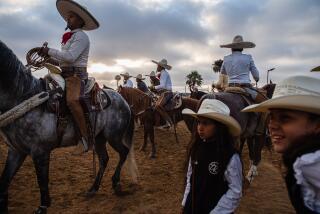Another day at the chariot races
Sunday, Sunday, Sunday! The Learning Channel! Be there from 8 to 10 p.m. for “Chariot Race 2002”! Monster Roman chariot action like you’ve never seen before!
It’s too bad the Learning Channel chose to present what is inherently an exciting subject in an annoying way. Chariot racing was the spectator sport of the ancient Romans, full of the drama of victory, defeat and death. Race days were public holidays, and there was such lust for chariot races that by the time of the fall of the Roman Empire, every other day was a race day. There’s no need to make the subject palatable to modern audiences by sugar-coating it in a veneer of Extreme Sports Mania!
If you can get past the grating staccato narration and the heavy-metal guitar riffs, “Chariot Race 2002” presents fascinating peeks at the culture of charioteers and their rabid fans. The program re-created an ancient Roman chariot race in Spain, including training four modern charioteers and reconstructing authentic chariots and a Circus Maximus-type course. The program comes alive when the real history emerges in the form of mosaic murals, sculptures, written records and other artifacts. We learn that ancient Romans took the races so seriously that they would inscribe curses on lead tablets, roll them up and bury them at the starting gate or at dangerous curves on the track. Other interesting tidbits: Charioteers drank a combination of wine and boar’s dung to regain their strength after races.
These intriguing visions of the past are interrupted by the modern charioteers’ training, kvetching and racing. When they meet on the newly built track, the showdown is a bit of a letdown. The reconstructed race can’t compete with the imagined scene of the Circus Maximus crowd of a quarter-million fans roaring so loudly they could be heard throughout Rome. And no Roman charioteer ever yelled, “Yeah, baby!” upon emerging victorious, like the winner of this contest, who is clearly unable to re-create that principal Roman virtue, stoicism.
More to Read
Sign up for The Wild
We’ll help you find the best places to hike, bike and run, as well as the perfect silent spots for meditation and yoga.
You may occasionally receive promotional content from the Los Angeles Times.




